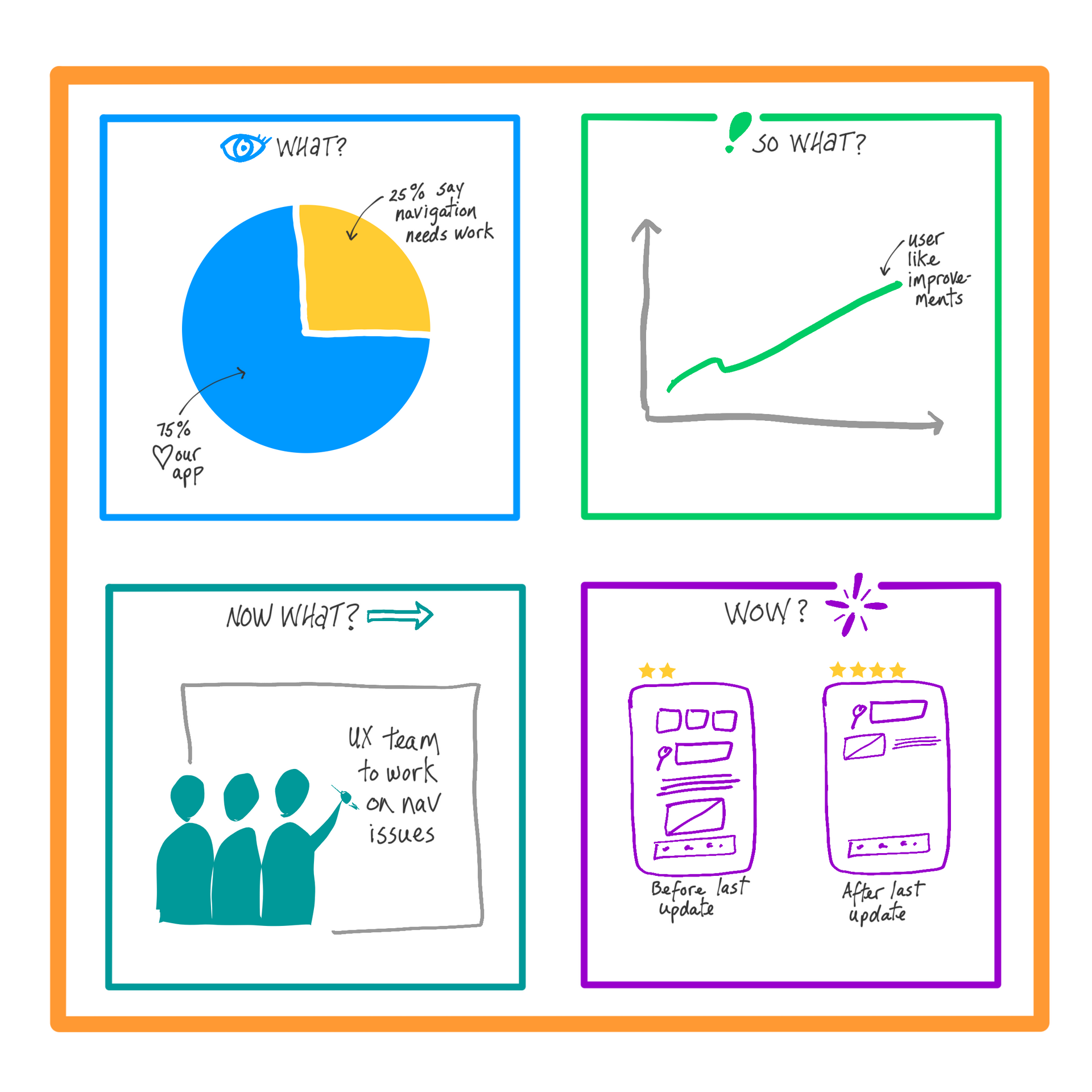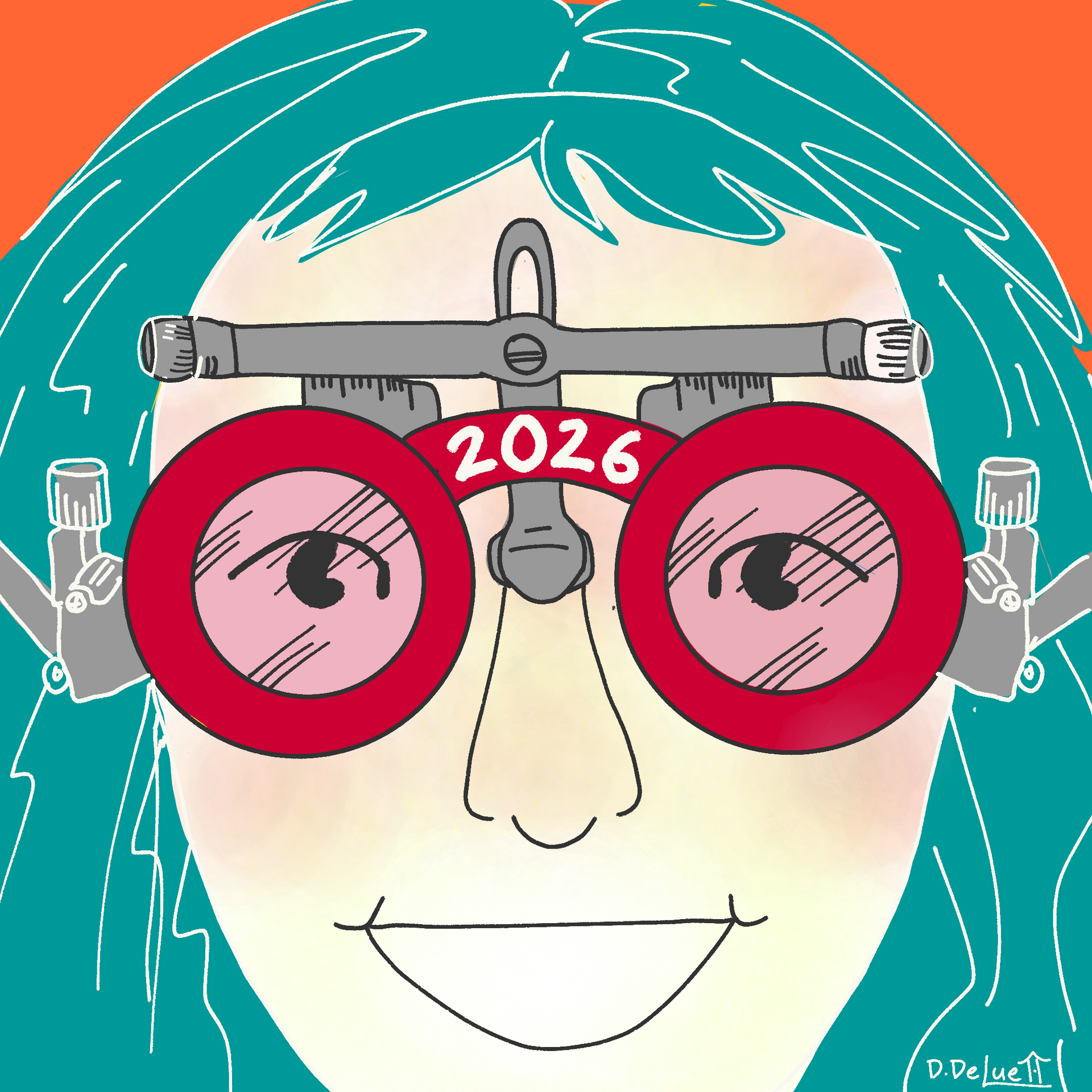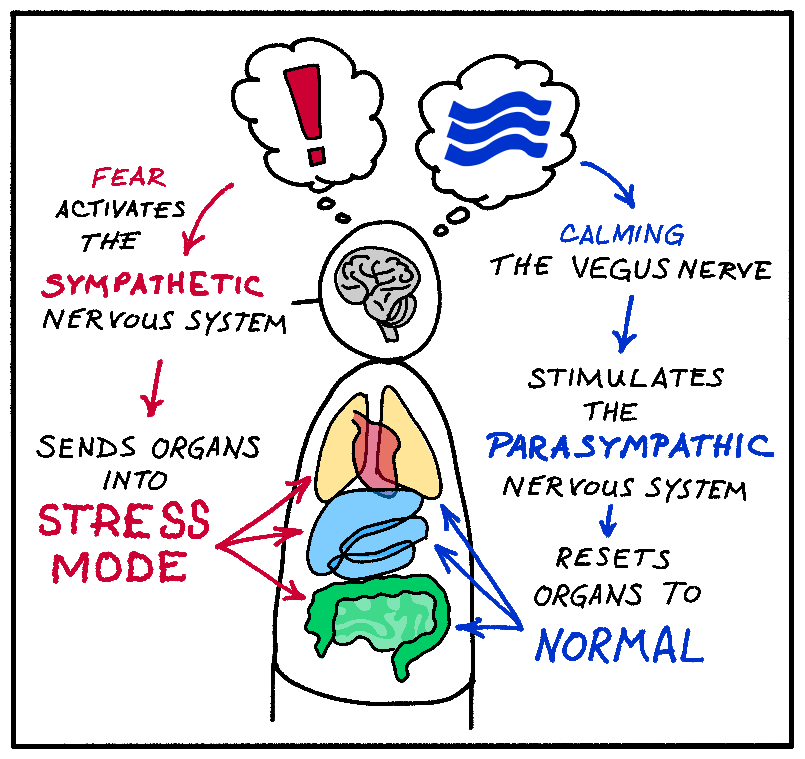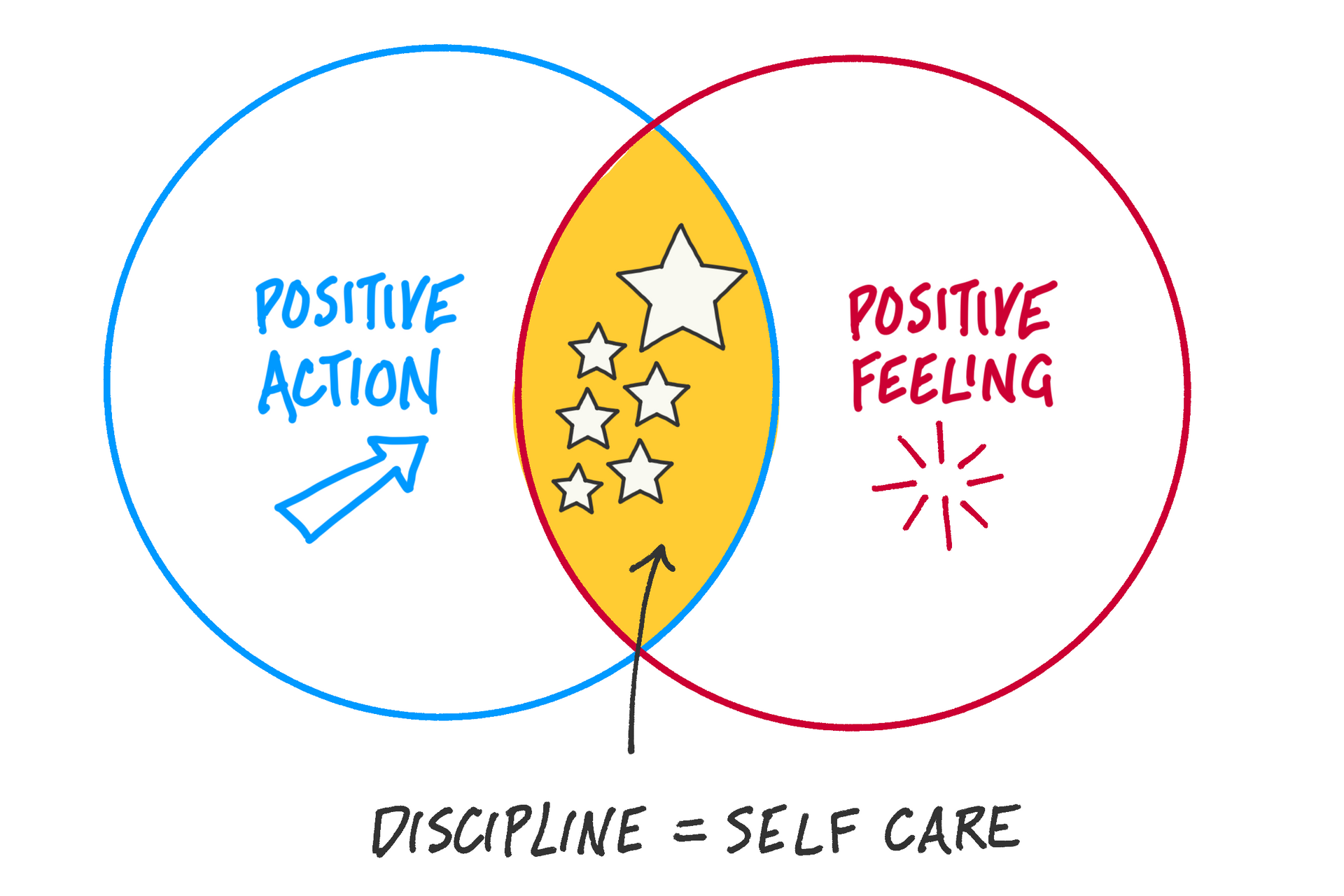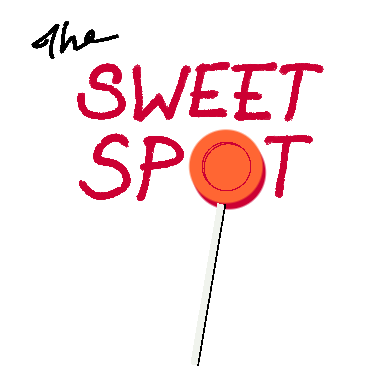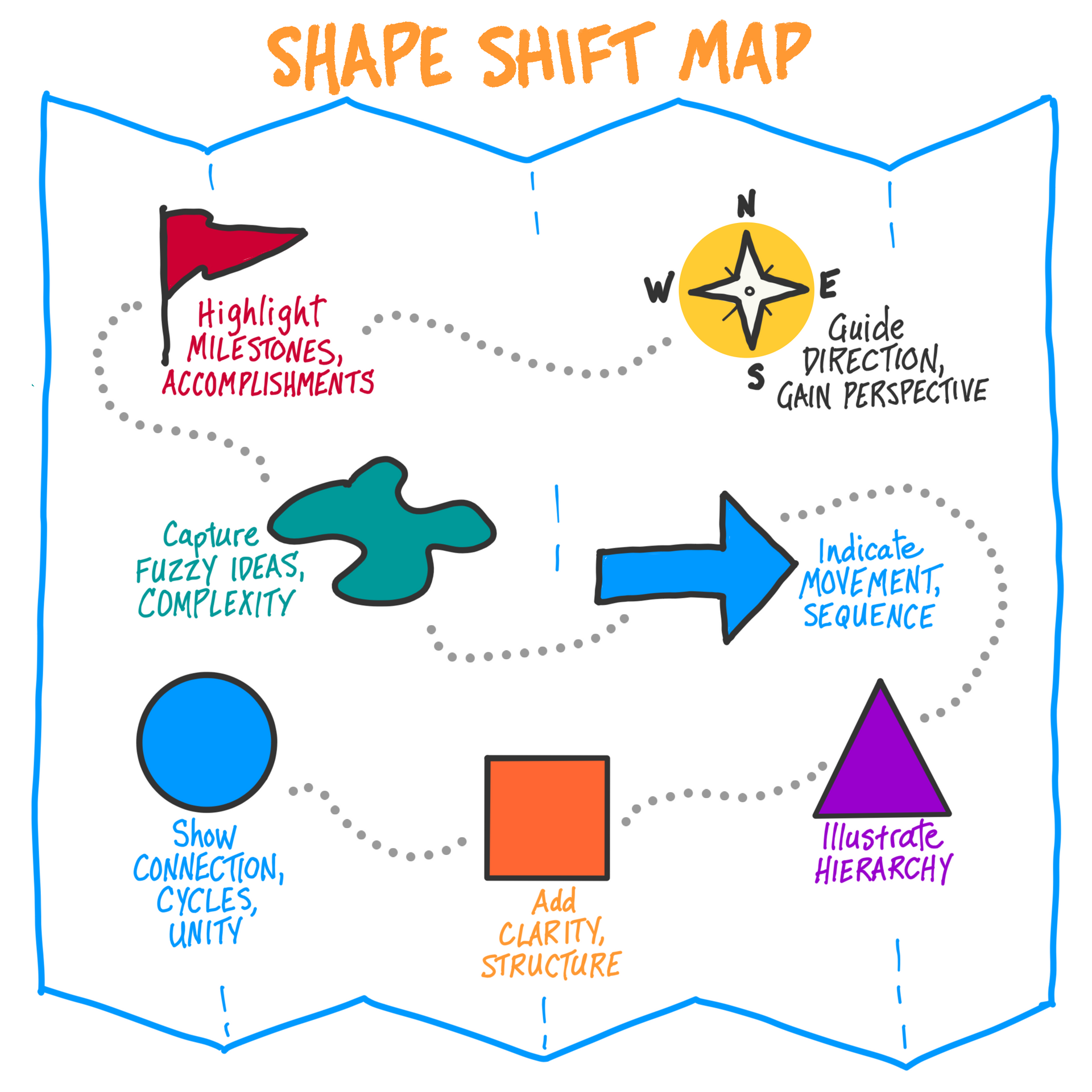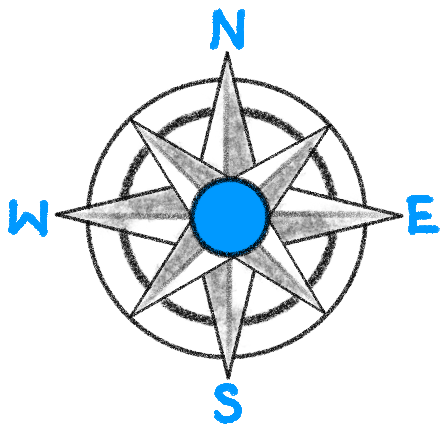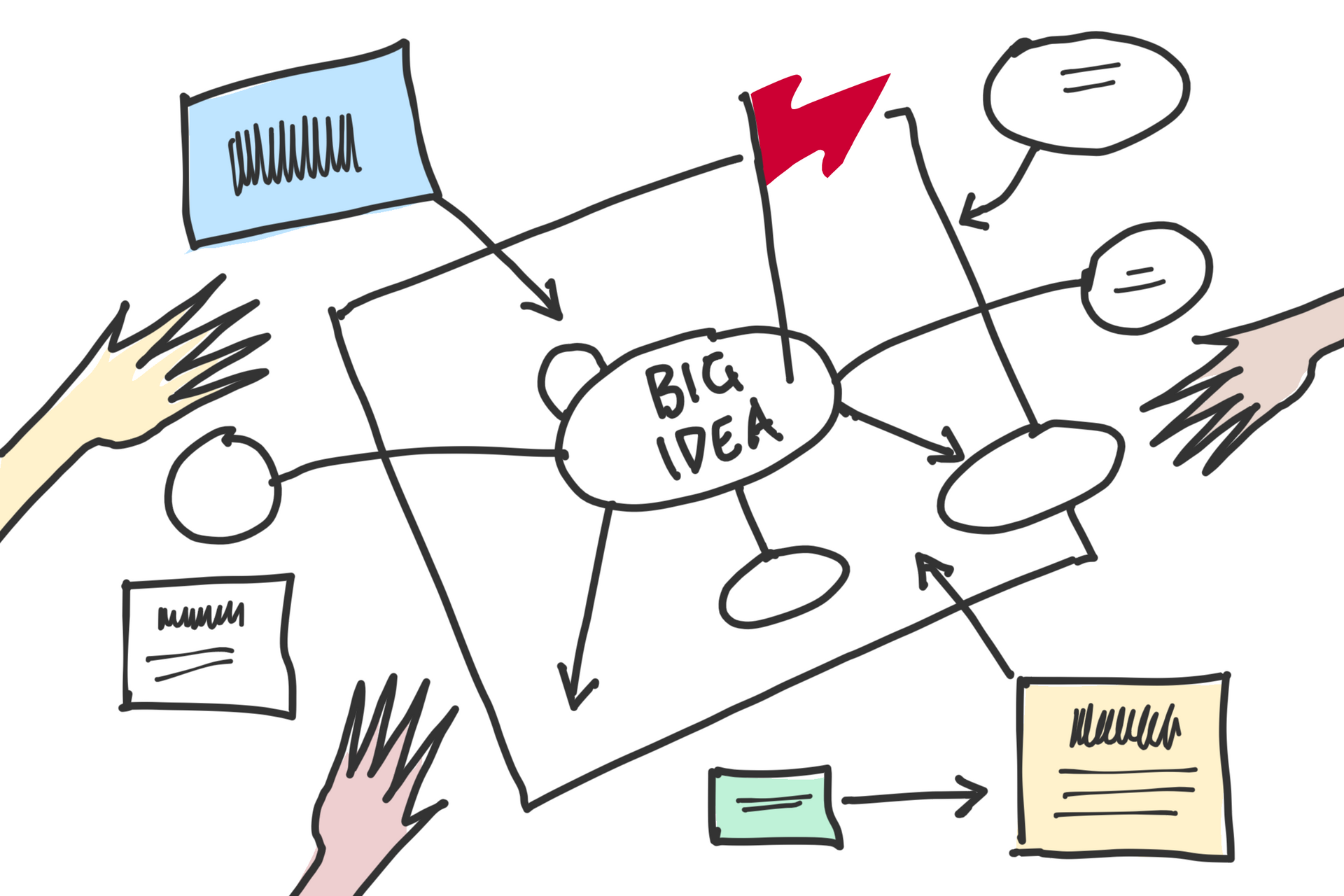Shape Shift - The Square
The Art of Applied Visual Thinking
Welcome to the Shape Shift Series Part 2.
In our last issue "Shape Shift - The Circle" we explored the circle—a symbol of unity, cycles, and flow. But what happens when those ideas need to be sorted, structured, or set into motion? That’s where the square comes in. If a circle holds energy, a square directs it. It’s the shape of boundaries and balance, a visual container where messy ideas can settle into order.
The Square
Squares are more than boxes or blocks—they represent structure, containment, and clarity. In visual thinking, a square helps ground scattered thoughts and shape them into something actionable.
Here’s how you can use a square in your visual thinking:
1. Map out a process
Squares lend themselves to sequence. Place four smaller squares inside a larger one and use them to capture a step-by-step process.
Try this: Use the classic “What? So What? Now What? Wow!” reflection model.
- What? Describe the situation or event.
- So What? Reflect on its significance or impact.
- Now What? Decide what comes next.
- Wow! Capture a key insight, breakthrough, or appreciation.
Use this framework after a meeting, a project wrap-up, or even a challenging conversation to help clarify key takeaways.
2. Highlight important points
Squares help you sort and contrast ideas clearly. Line up boxes in rows and columns to create a visual comparison grid.
Try this: Draw a 2x2 matrix. Label the axes based on your decision criteria—like effort vs. impact, or cost vs. value.
Example: You’re deciding which marketing strategy to prioritize. Label your grid:
- Vertical axis = Effort (Low to High)
- Horizontal axis = Impact (Low to High)
- Then, plot each strategy idea in the box where it fits. A low-effort, high-impact idea goes in the top-left—usually a great place to start. A high-effort, low-impact idea? Probably one to skip.
Seeing your options visually makes priorities easier to spot.
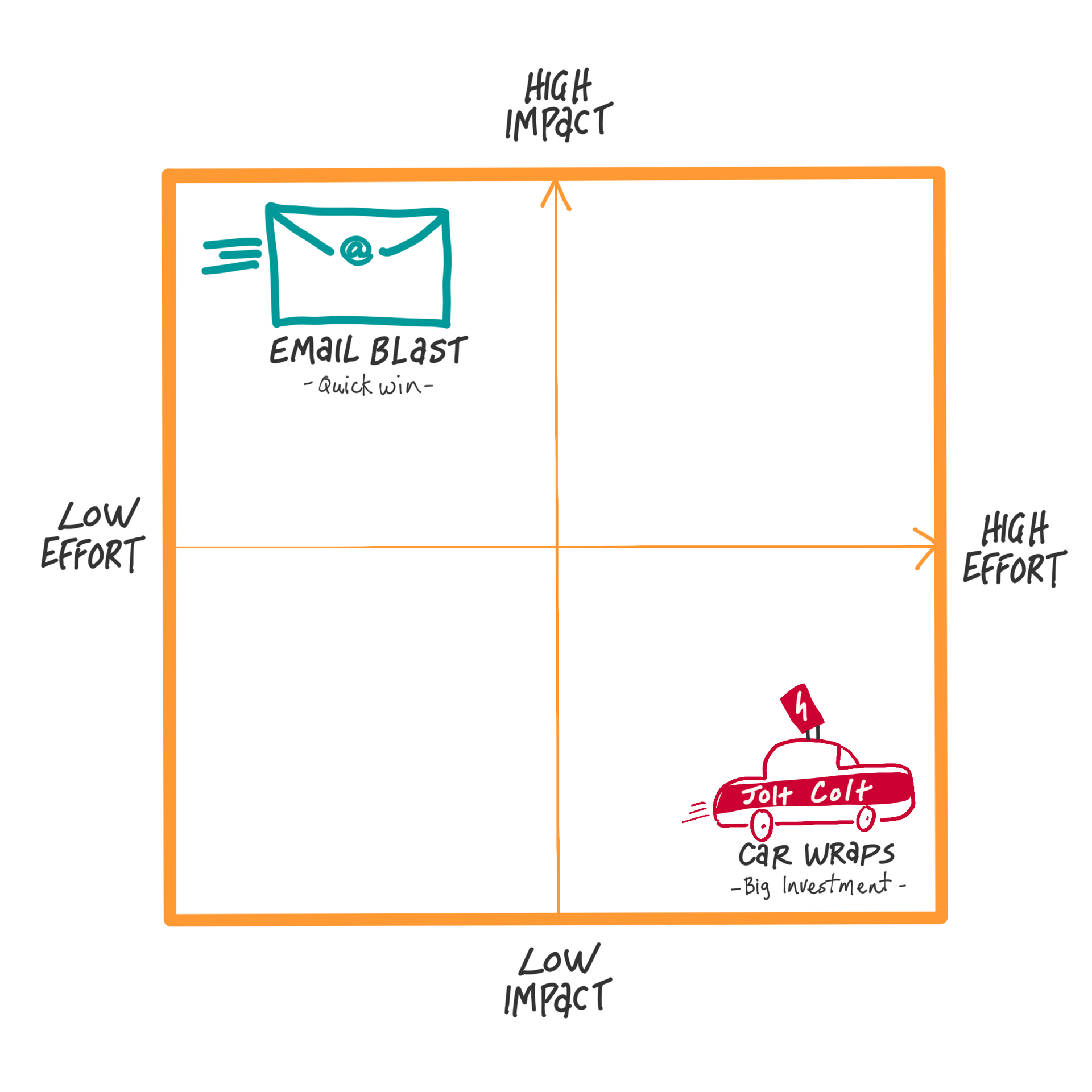
3. Frame a question
Sometimes you don’t need answers—you need a better question. A square helps you break a big topic into approachable angles.
Try this: In the center of the square, write your main issue or decision. Around each corner, write a different lens:
- Facts – What do I know for sure?
- Feelings – How do I feel about this?
- Fears – What’s holding me back?
- Future – What’s possible from here?
Example: You’re considering whether to apply for a leadership role.
- Facts: I have 10+ years of experience and strong team support.
- Feelings: I’m both excited and nervous.
- Fears: Impostor syndrome and fear of failing publicly.
- Future: This could lead to growth, influence, and new challenges.
Breaking it down like this gives you clarity—not just on the decision, but on how you’re thinking about it.
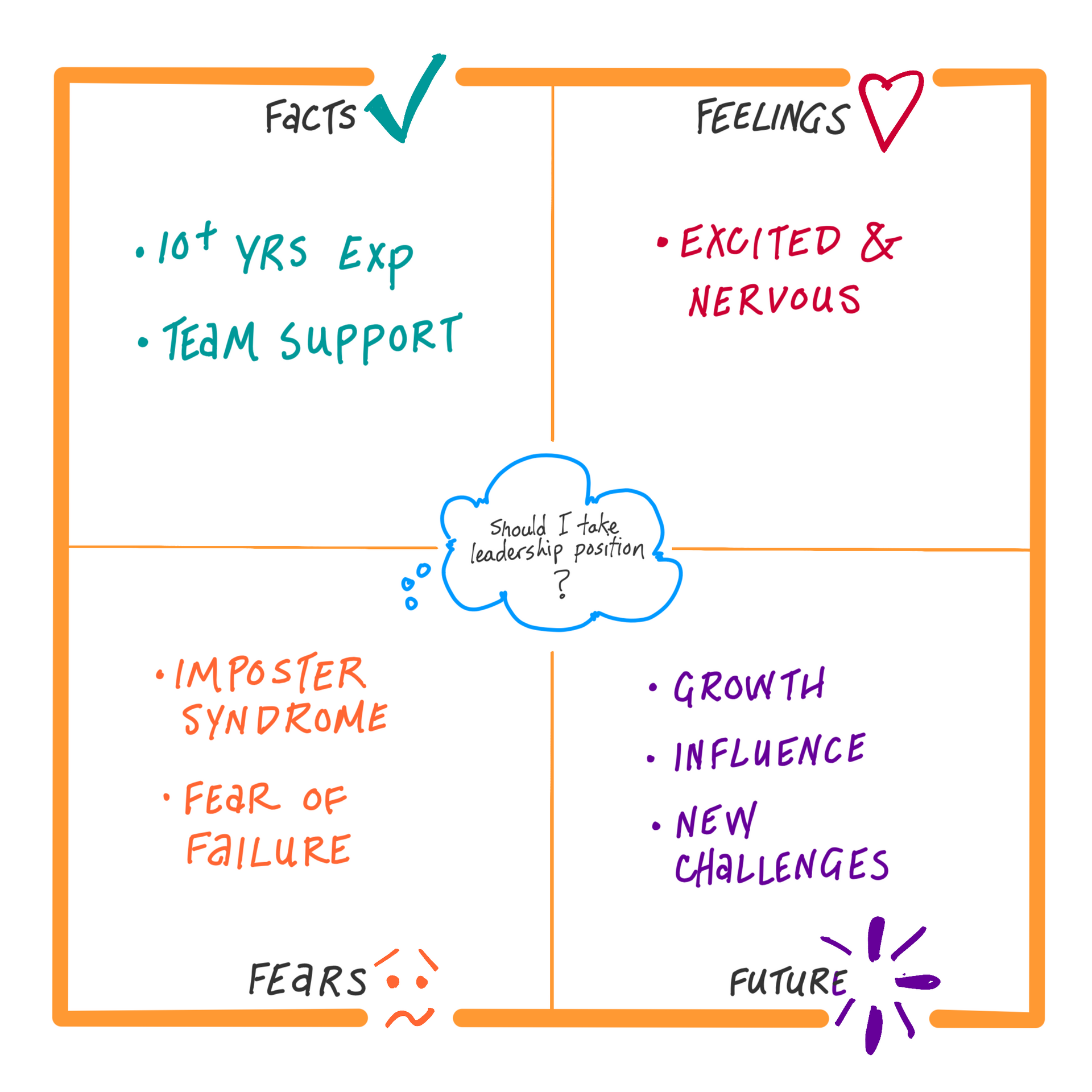
Squares are the shape of stability—solid lines, right angles, and everything in its place.
When your thoughts feel scattered or your plans feel loose, draw a square. Give your ideas a home.
Ready to put your squares to work?
All 3 of these processes start with 4 squares. Choose one and give it a go.
- Draw a square on your page or whiteboard.
- Divide it into four sections using a cross or grid.
- Follow the steps above for the process you choose to
- clarify key steps by mapping out a process or
- visualize priority by comparing options side by side or
- gain clarity by visually framing a question
Let the edges of the square help you focus, structure, and sort.
Tune in next time when we move on to The Triangle—a small shape that brings sharp focus.

